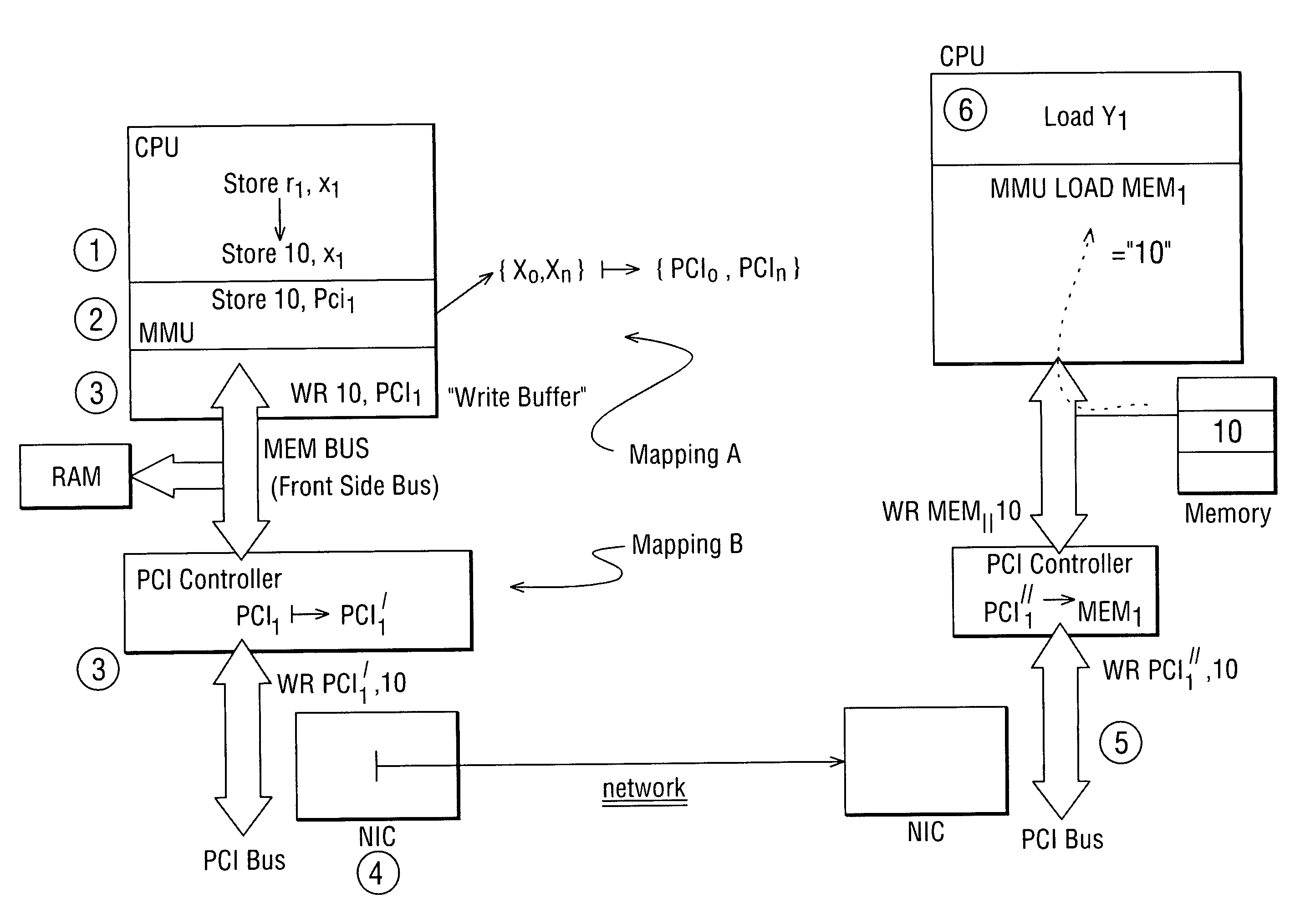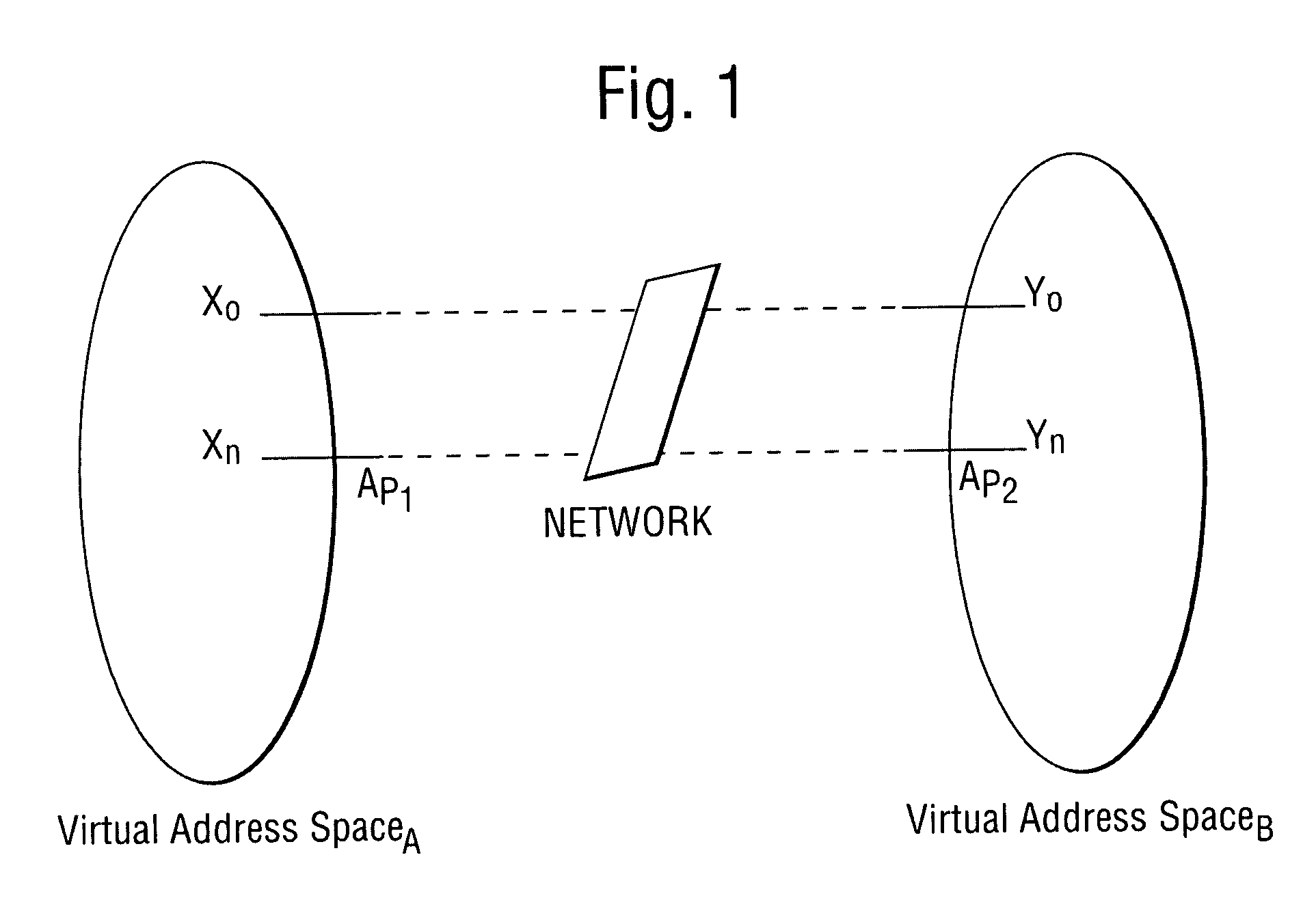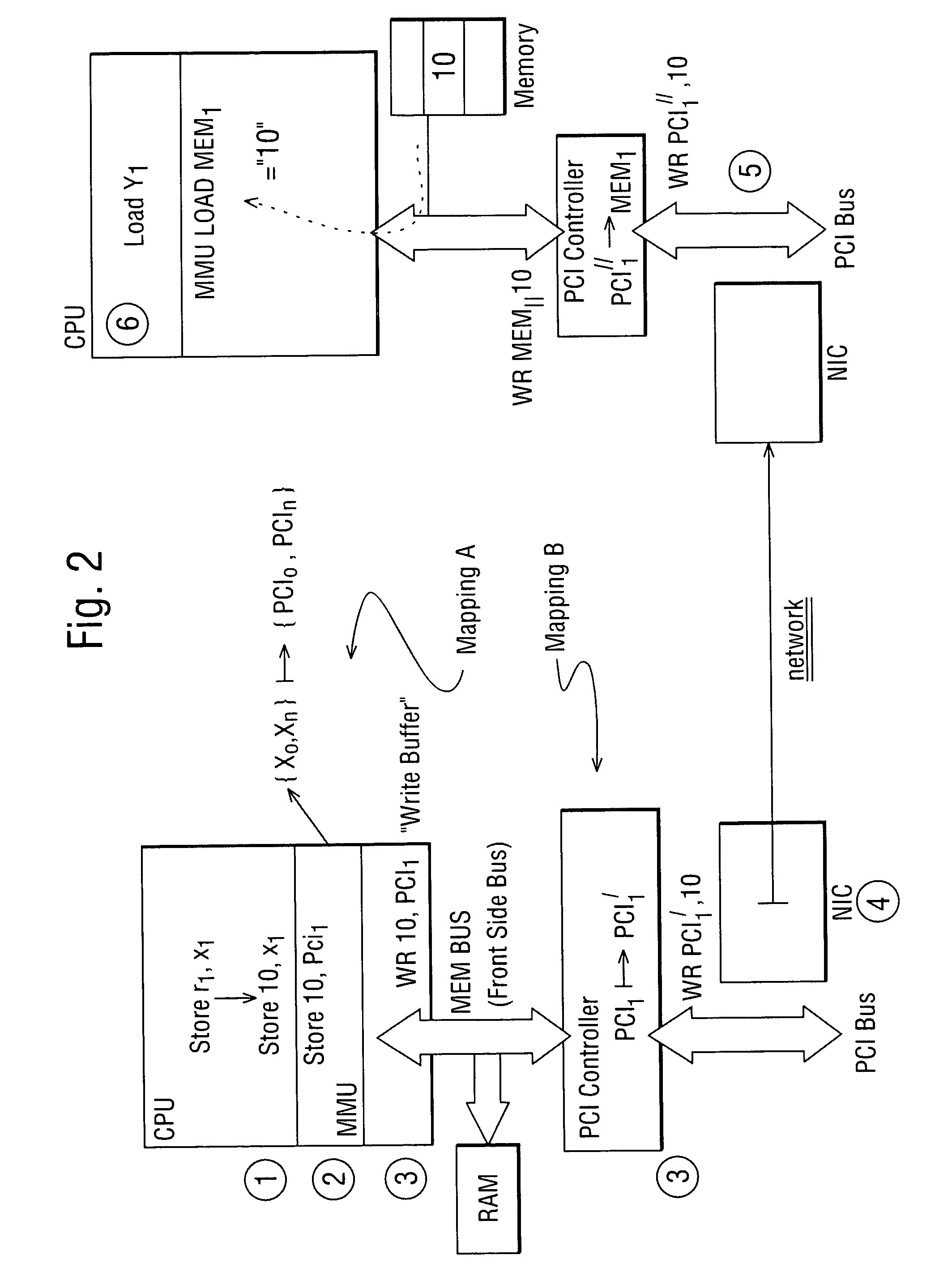Network interface and protocol
a network interface and protocol technology, applied in the field of network interfaces and protocols, can solve the problems of not all the aperture mappings along the path can be set up by, the copy step is obviously inefficient, and the mapping is required over a network
- Summary
- Abstract
- Description
- Claims
- Application Information
AI Technical Summary
Benefits of technology
Problems solved by technology
Method used
Image
Examples
Embodiment Construction
[0136]FIG. 3 is a schematic diagram of a data transmission system whereby a first data processing unit (DPU) 20 can communicate with a second data processing unit 21 over a network link 22. Each data processing unit comprises a CPU 23, 24 which is connected via a memory bus 25, 26 to a PCI controller 27, 28. The PCI controllers control communications over respective PCI buses 29,30, to which are connected NICs 31, 32. The NICs are connected to each other over the network. Other similar data processing units can be connected to the network to allow them to communicate with each other and with the DPUs 20, 21. Local random access memory (RAM) 33, 34 is connected to each memory bus 25, 26.
[0137]The data transmission system described herein implements several significant features: (1) dynamic caching of aperture mappings between the NICs 31, 32; (2) a packet oriented setup and teardown arrangement for communication between the NICs; and (3) the use of certain bits that are herein termed...
PUM
 Login to view more
Login to view more Abstract
Description
Claims
Application Information
 Login to view more
Login to view more - R&D Engineer
- R&D Manager
- IP Professional
- Industry Leading Data Capabilities
- Powerful AI technology
- Patent DNA Extraction
Browse by: Latest US Patents, China's latest patents, Technical Efficacy Thesaurus, Application Domain, Technology Topic.
© 2024 PatSnap. All rights reserved.Legal|Privacy policy|Modern Slavery Act Transparency Statement|Sitemap



